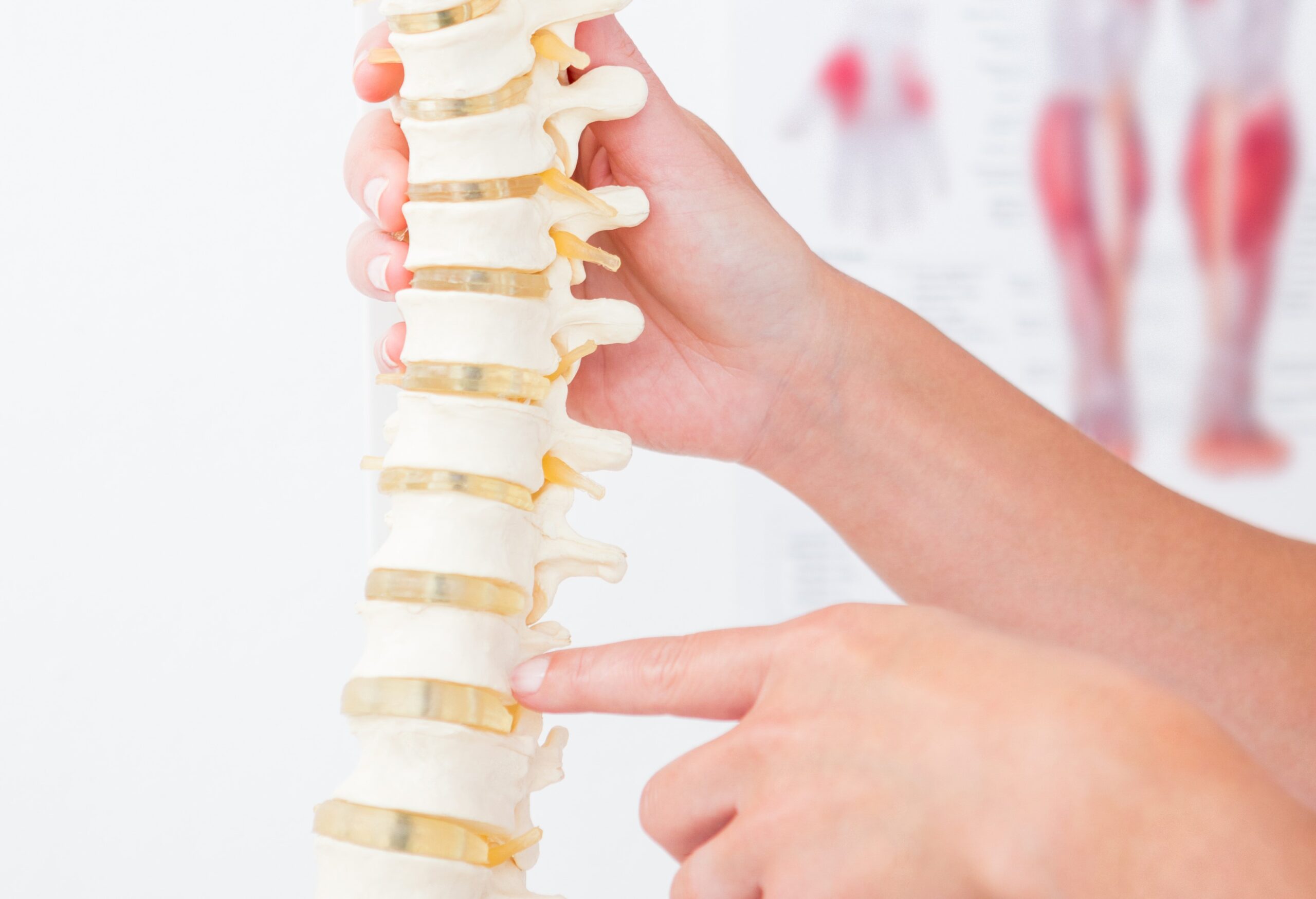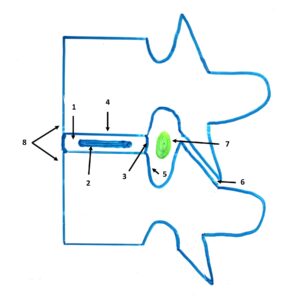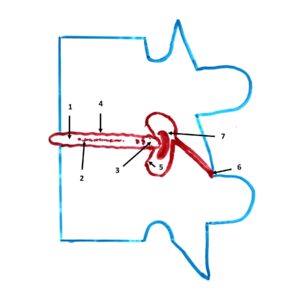Are you suffering with low back pain and have been diagnosed with degenerative disc disease? Have all your previous attempts at finding relief been unsuccessful? In this article, I’ll share with you how I help people with degenerative disease overcome their back pain.
Before I explain the solution to overcoming back pain associated with degenerative disc disease, I’ll first explain what degenerative disc disease is and why it can cause back pain.
Normal Spinal Anatomy
To understand what degenerative disc disease is, it is helpful to have a clear understanding of the normal anatomy of the spine. The spine consists of a sequence of bones known as vertebrae which are separated by intervertebral discs. The posterior sections of adjacent vertebra join together to form joints, called facet joints. At each level of the spine, there are openings through which nerves exit the spinal cord.
In a healthy spine, you will notice the following things:
- The discs are plump, with no narrowing of the disc space.
- The gel inside the disc remains well-hydrated.
- There is no disc bulging or herniation.
- The end plate – the border between the disc and the bone – is smooth.
- The back of the vertebral bodies are flat.
- The facets joints have ample joint space in them.
- The neural foramen – the opening through which the spinal nerve exits – is unobstructed.
- Adjacent vertebrae are neatly stacked on top of each other.
Anatomical Changes in Disc Degeneration
In contrast, degenerative disc disease would exhibit a combination of some or all the following changes:
- Flattening of the disc and narrowing of the disc space.
- Drying out of the gel inside the disc.
- Bulging or herniation of the disc. Disc tears in the outer rings of the disc may also be present.
- Irregular and jagged end plates.
- Growth of bone spurs, aka osteophytes, on the vertebrae.
- Reduction in facet joint space due to the narrowed disc space.
- Narrowing of the neural foramen, potentially causing compression to the exiting spinal nerve.
- Displacement of the top vertebra relative to the one below at the level of the disc degeneration (not shown on illustration).
Disc Degeneration Causes of Pain
The numerous anatomical alterations associated with degenerative disc disease results in there being a diverse number of potential causes of pain. Some of the more common causes of pain are the following:
- Loss of natural stiffness leading to painful micromovements. Once the disc becomes flattened, that level of your spine loses some of its natural stiffness and becomes susceptible to painful rubbing movements of one vertebra on another.
- Increased pressure on the facet joints, causing joint injury or irritation. A flattened disc results in more load being transferred through the facet joints.
- Ingrowth of ‘pain-sensing’ nerves into the disc. The flattened disc’s internal pressure is decreased, allowing ‘pain-sensing’ nerves to grow into the disc. This makes the disc more susceptible to mechanical forces.
- Nerve compression in the neural foramen. The combination of the disc bulging plus bone spur growth reduces the size of the neural foramen, resulting in compression of the exiting nerve root.
Successful Treatment
Since the cause of pain varies from person to person, there isn’t a one-size-fits-all approach to treating degenerative disc disease. Instead, the key to successfully treating degenerative disc disease lies in first determining and then eliminating the specific cause in each specific case.
For instance, if a person with degenerative disc disease has pain because of loss of natural stiffness leading to painful micromovements, the solution would be to learn how to use the torso muscles to stiffen up the spine to get rid of those painful micro movements.
Comparatively, if a person with degenerative disc disease has pain because of the resultant increased pressure through their facet joints, the solution would be to adapt their postures, movements and activities to minimize the loading of the joints, thereby decreasing the irritation of the joints.
When someone comes to the clinic suffering from low back pain, my first goal, as a certified McGill Method provider, is to determine exactly why they have pain. Once we know the specific cause, we can eliminate it. The cause is most often eliminated by modifying their postures, their movements or their activities. This minimizes the stress that is placed on the irritated or the painful structure, allowing the tissue to heal and the pain to resolve.
Once the pain is resolved, various individualized exercises are used to increase the robustness and the resilience of their spine to ensure they have access to the broadest possible range of pain-free activities which are necessary for their daily life.
If you have degenerative disc disease and are experiencing associated low back pain, let us help you overcome it. Contact us by clicking on the Book Appointment button and completing the required form. If you know of others who may benefit from this information, please share it with them.


